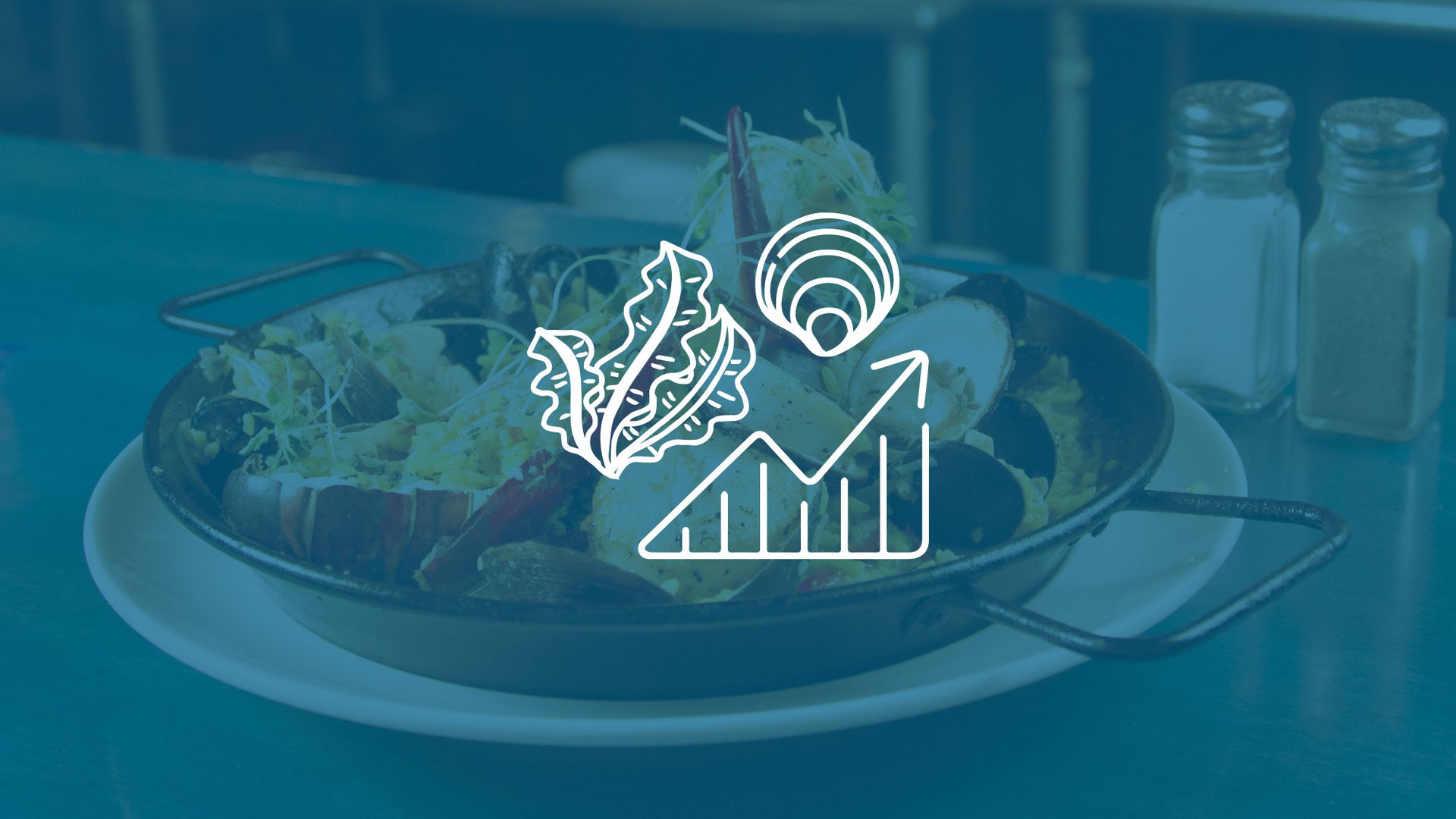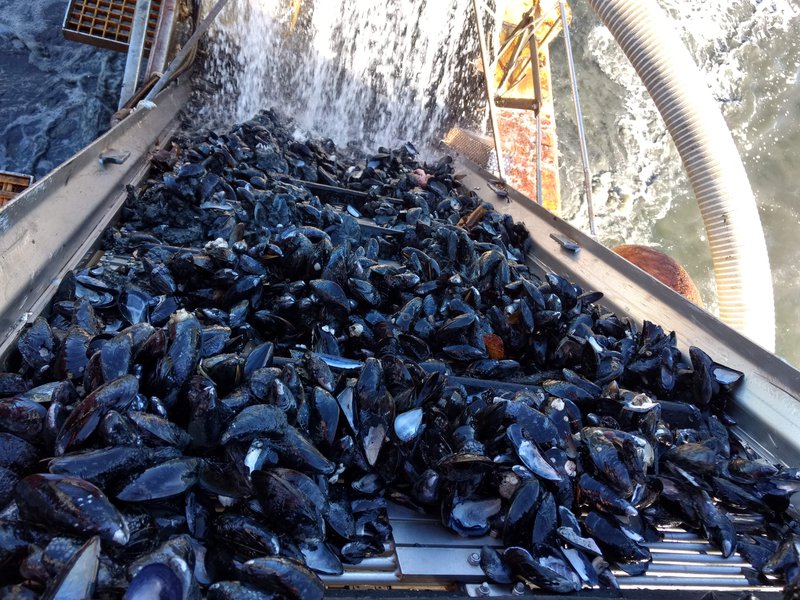Building Demand for Local Seafood
Perspectives | Dec 31, 2018
by Kyle Foley
Sustainable Seafood Director
The ability of coastal communities to thrive in the coming years will depend in large part on our ability to grow a diverse seafood economy. That includes promotion of wild-caught and farmed fish from the Gulf of Maine.

As part of that effort, we published our top five reasons to eat Gulf of Maine Seafood:

Our commercial fisheries are among the most well-managed in the world. You can feel confident choosing seafood from the Gulf of Maine, knowing the fishery is carefully managed through a rigorous scientific process.
Fishermen in our region live with a lot of restrictions, including when and where they can fish, as well as the species, size, and amount of fish they can land.

Buying local seafood supports fishermen and their families, and it keeps our coastal communities thriving. In order to run their businesses, fishermen purchase fuel, bait, and other marine supplies, which supports local businesses big and small.
Seafood is at the core of our region’s economy and an important part of our cultural identity.

Did you know we import 91% of the seafood we consume here in the U.S.? Meanwhile, local fishermen leave hundreds of thousands of pounds of abundant Gulf of Maine species unharvested each year, due to lack of demand. Lesser-known fish such as redfish, pollock, dogfish, and whiting are bountiful (and equally as tasty) as more popular species like cod and haddock.
With so many delicious fish available right here in the Gulf of Maine, why look elsewhere?

When it comes to environmental impact, seafood has a smaller carbon footprint than other animal proteins, like beef and pork, which require large amounts of land, water, and feed to produce.
For an even greener option, choose seafood harvested locally and cut down the miles your meal traveled to get to your plate.

Read more Underloved Species
Demand for underused fish species grows slowly but surely in Maine
Press Herald|Jun 17, 2018
Verified: Monkfish and Winter Skate
In 2011, we created our Gulf of Maine Responsibly Harvested® brand to help people buy seafood they can feel good about. Part of the brand process includes assessing and verifying which species from the Gulf of Maine region are responsibly harvested. This summer, we added two new species to our verified list: monkfish and winter skate.

“New England has some of the most well-managed fisheries in the world. These two species are both delicious and responsibly harvested, so don’t be afraid to give them a try!”
Kyle Foley Sustainable Seafood Director![]() Kyle Foley Sustainable Seafood Director
Kyle Foley Sustainable Seafood Director
Monkfish, which live on sandy areas of the ocean floor, are caught mostly by trawl nets in the Gulf of Maine. Fishermen targeting monkfish face strict regulations, including mesh size restrictions for their nets, limits on how much they can catch annually, and minimum legal sizes. Monkfish tails have been compared to lobster in texture and taste, and their livers are highly sought after in international markets.
Winter skate is a beautifully mild and flaky fish, yet fishermen historically have not pursued them (except for bait), due to lack of consumer demand. Now, as traditionally important species like cod are less available to fishermen, many are turning to fish like winter skate as a source of income.
Blue Mussels, Golden Opportunity

Blue mussels from Maine are both a special part of the ecosystem and an iconic seafood dish. People from here and away have enjoyed them for centuries and they have only increased in popularity over the last decade.
However, despite their importance, managers and buyers struggle to make decisions about blue mussels due to a lack of data. To address this need, we’re working with industry partners to collect better data through a process called a Fishery Improvement Project (FIP).
“The goal of the FIP is to ensure the long-term health of the mussel fishery in Maine and the economic sustainability of the mussel industry,” said Kyle Foley, Sustainable Seafood Program Manager. “It’s encouraging to see the variety of businesses up and down the supply chain that are committed to this goal.”
The collaboration includes eight companies — Acadia Aqua Farms, Bristol Seafood, Cape Cod Shellfish Company, Euclid Fish Company, Hannaford Supermarkets, J.P.’s Shellfish, Maine Shellfish Company, and Moosabec Mussels — which represent each step of the mussel supply chain from boat to plate. The project provides digital measurement tools to help these businesses quickly and accurately record crucial data while on the water. Their data will help us ask and answer questions about mussel distribution, population size, climate change resiliency, and more.
In the coming months, the group of collaborators will gather more data, network with scientific and fishing communities, and pursue additional funding to learn more about this keystone species and important fishery.
Read More
-
![Updates on Aquaculture]()
Updates on Aquaculture
2018 was a year of partnerships, progress, and growth for our aquaculture team. We took on local infrastructure projects, state-level growth initiatives, and workforce development …
Perspectives
-
![Celebrating Two Seafood Champions]()
Celebrating Two Seafood Champions
Both campuses now source 100% of their fresh white fish (a category that includes haddock, pollock, cod, and other flaky, white fish) through GMRI’s Gulf …
Tidings
-
![Gulf of Maine Warming Update: Spring 2024]()
Gulf of Maine Warming Update: Spring 2024
Over the past decade, scientists have led a body of research that highlights the rapid pace of warming in the Gulf of Maine. To help …
Reports
-
![Gulf of Maine, Explained: Tracking Ocean Conditions]()
Gulf of Maine, Explained: Tracking Ocean Conditions
GMRI Senior Program Manager, and leader of our Ocean Data Products team, Riley Young-Morse explains how she uses deep water buoys to collect data on …
Gulf of Maine, Explained




